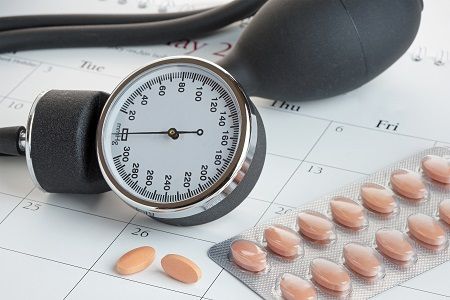Moderate Exercise Does Not Exacerbate Statin-Associated Muscle Pain, Study Finds
Data from a recent study suggests statin-associated muscle symptoms were not exacerbated as a result of moderate-intensity physical activity.

New data suggests presence of statin-associated muscle symptoms was not linked to an exacerbation of exercise-induced muscle injury among statin users.1
With muscle pain, either perceived or real, among the most commonly reported adverse events associated with statin use, results of the study, which included symptomatic and asymptomatic statin users, provide evidence detailing associations between exercise and positive health benefits in these patients without increasing risk of muscle injury.1
“Even though muscle pain and fatigue scores were higher in symptomatic statin users at baseline, the increase in muscle symptoms after exercise was similar among the groups,” said lead investigator Neeltje Allard, MD, researcher at the Department of integrative physiology, Radboud University Medical Center.2 “These results demonstrate that prolonged moderate-intensity exercise is safe for statin users and can be performed by statin users to maintain a physically active lifestyle and to derive its cardiovascular health benefits.”
With a lack of definitive literature on the safety of moderate exercise in patients with statin-associated muscle symptoms, Allard and a team of colleagues designed their study with the intent of comparing the impact of moderate-intensity exercise on muscle injury in symptomatic and asymptomatic statin users, plus nonstatin using controls.1
Exclusion criteria for the study included those with diabetes, hypo- or hyperthyroidism, known hereditary skeletal muscle defects, other diseases known to cause muscle symptoms or those using coenzyme Q10 (CoQ10) supplementation. Overall, investigators identified 35 symptomatic statin users, 34 asymptomatic statin users, and 31 control subjects for inclusion in the study. For the purpose of analysis, participants were randomized to walk 30, 40, or 50 km per day for 4 consecutive days.1
For the purpose of analysis, lactate dehydrogenase, creatine kinase, myoglobin, cardiac troponin I, and N-terminal pro-brain natriuretic peptide were used to measure muscle injury. In secondary analyses, investigators planned to estimate associations between leukocyte CoQ10 levels and muscle markers, muscle performance, and reported muscle symptoms.1
Results of the investigators’ initial analysis indicated all muscle injury markers were comparable at baseline (P > .05) and increased following exercise (P <.001), with no differences in the magnitude of exercise-induced elections among groups (P >.05). Further analysis suggested muscle pain scores were greatest among the symptomatic statin user group at baseline (P <.001). During the study, muscle pain scores increased similarly in all groups following exercise (P <.001).1
Additional analyses revealed muscle relaxation time increased more in symptomatic statin users than among control subjects following exercise (P=.035). When assessing CoQ10 levels, results indicated levels did not differ among symptomatic (2.3 nmol/U; IQR: 1.8-2.9 nmol/U),asymptomatic statin users (2.1 nmol/U; IQR: 1.8-2.5 nmol/U), and control subjects (2.1 nmol/U; IQR: 1.8-2.3 nmol/U]; P=.20), and did not relate to muscle injury markers, fatigue resistance, or reported muscle symptoms.1
Published alongside the study was an editorial from Robert Rosenson, MD, of the Metabolism and Lipids Unit in the Zena and Michael A. Wiener Cardiovascular Institute at Mount Sinai Heart. In the editorial, Rosenson commends the authors on their efforts and results of their study. Later in the editorial, Rosenson offers his perspective on results and how they influence management of patients on statin therapy.3
“In summary, many patients who develop SAMS may engage in a moderately intensive walking program without concern for worsened muscle biomarkers or performance,” Rosenson wrote.3 “Although exercise was accompanied by more fatigue in symptomatic vs asymptomatic statin users in this short-term study, it remains uncertain from this study whether sustained exercise in SAMS patients will effectuate improved metabolic biomarkers or exercise capacity in the long term.”
References
- Allard N, Janssen L, Lagerwaard B, et al. Prolonged Moderate-Intensity Exercise Does Not Increase Muscle Injury Markers in Symptomatic or Asymptomatic Statin Users. J Am Coll Cardiol. 2023 Apr, 81 (14) 1353–1364.https://doi.org/10.1016/j.jacc.2023.01.043
- Moderate Exercise Safe for People With Muscle Pain From Statins - American College of Cardiology. American College of Cardiology. Published April 3, 2023. http%3a%2f%2fwww.acc.org%2fAbout-ACC%2fPress-Releases%2f2023%2f04%2f03%2f19%2f04%2fModerate-Exercise-Safe-for-People-With-Muscle-Pain-From-Statins
- Rosenson R, et al. The Importance of Exercise in Cardiometabolic Health in Patients Reporting Statin-Associated Muscle Symptoms∗ . J Am Coll Cardiol. 2023 Apr, 81 (14) 1365–1367. https://doi.org/10.1016/j.jacc.2023.02.011